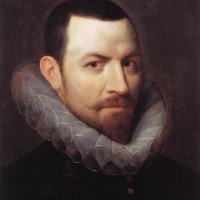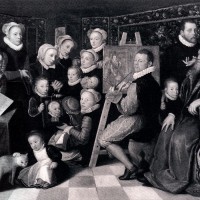| Painting Name | The Last Supper |
| Painter Name | Otto van Veen |
| Completion Date | 1592 |
| Size | 224 x 350 cm (7' 4.19" x 11' 5.8") |
| Technique | Oil |
| Material | Canvas |
| Current Location | O.L. Vrouwekathedraal (Antwerp Belgium) |
Medieval artist Otto van Veen has depicted a much-celebrated incident from the history of Christians which is one of the holiest and most important anecdotes of the religion. In terms of depiction, it is no less spectacular than the very much famous The Last Supper by Leonardo da Vinci. Though, both paintings have different surroundings and orientations towards the true incident.
Using the much popular medium of oil on canvas, Otto van has illustrated his imagination about the last supper. He has used more thorough and clear approach depicting the elements and people than the secretly-implying approach of da Vinci. Jesus is sitting with an indicating pose that he is about to reveal the traitor in the room. To indicate the position of the traitor Judas Iscariot, he has put him in a different pose than everyone else. Judas is sitting in front getting some more wine from a boy.
Inclusion of different elements is richer in the painting. We can see the stones of the Ten Commandments in the backdrop, sitting silently. There is also a dog sitting under the table at the bottom-right corner of the picture. The dog is just giving a little bit of glimpse with mostly uneasy expressions. There could be a hidden symbolism of the inclusion of that dog as Otto van, the teacher Peter Paul Rubens has tried to include things with implied meanings and inherent messages.
The different approach of the last supper than the popular one has its own perfections and significant artistic adequacy to talk about. As longer you observe the painting, the longer you get interested in it by finding and fitting the secret meanings and indications. Thus, a different artist’s approach can also help us to explore more about the same incident.



